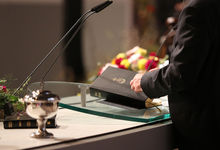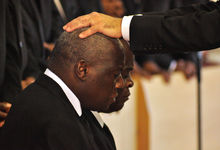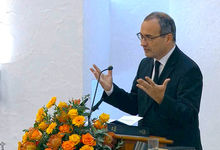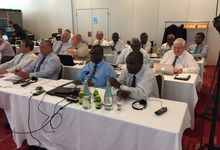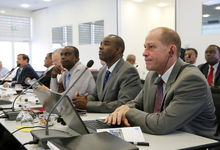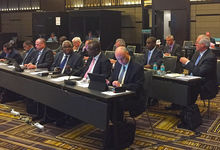Our concept of ministry reaches a new level
The definition of ministry remains a prominent topic: in 2018, the focus was above all on the priestly ministry. New regulations will come into effect on Pentecost 2019. The Chief Apostle himself will inform the members in detail in advance.
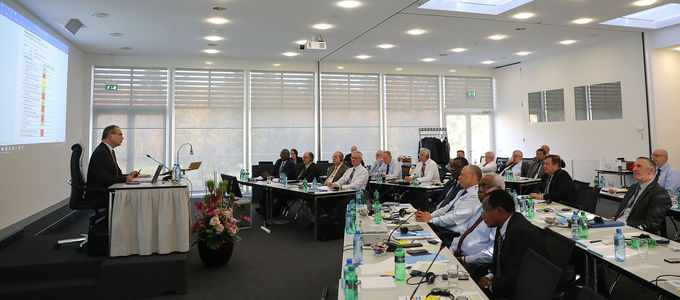
To replicate the early church in faithful detail in order to be completed as the church of the end-time: such was and is the objective of the apostolic movement. However, it is not as simple as it sounds, because the Bible does not provide a fixed ministerial structure.
The only ministry that Jesus equipped with authority was the apostle ministry. The apostles in turn passed along a portion of their responsibilities through laying on of hands—to deacons. The New Testament acknowledges only two further ministerial designations: the bishop and the elder—each with the same function of leading the local congregation.
The epistle to the Ephesians stills mentions prophets, evangelists, pastors, and teachers. These are not ministries, however, but gifts. The reason: the task descriptions and the requirements of the bearer, which are provided for the other ministries, are missing.
Authority on three levels
A defined ministerial structure only begins to emerge in the second century after Christ. In the process, a separation is made between elder and bishop. The presbyter becomes a priest. And the episcopate becomes the church leadership. This is how the tripartite division of ministry came into being, which has since become the norm in all hierarchically structured churches.
With respect to spiritual authority, the New Apostolic Church really only acknowledges three ministries:
- Deacon (with the authority to proclaim the word of God and bless the congregation);
- Priest (with the additional authority to perform Holy Baptism with water, celebrate Holy Communion, and proclaim the absolution);
- Apostle (with the additional authority to perform Holy Sealing and ordain ministers).
Separation of ministry and hierarchy
Interim levels differ only in their degree of leadership responsibility. Otherwise the Apostle possesses the same spiritual powers as the District Apostle and the Priest the same as the Bishop.
In view of these considerations, the District Apostle Meeting had already decided in 2017 to distinguish even more clearly between ministerial authority and leadership function within the apostolate than had been the case. Only Apostles are ordained. District Apostles are appointed, and their representatives—District Apostle Helpers—are assigned.
Over the past year, the discussions have revolved around the priestly ministry. At this level the corresponding leadership functions will now be referred to as “congregational rector” and “district rector”. These functions will also be conferred by appointment.
Nothing is as constant as change
Change in the ministerial structure is a tradition within the New Apostolic Church. In its early days, the Church had adopted the doctrine of the fourfold ministry from the Catholic Apostolic Church, which it then developed.
While these ministers shared equal rights in the congregation, in their ministerial categories they were subordinate to the respective minister at the next higher district level. If the development had continued like this “there would have been more ministers than members in the end”, history books report, citing a reform that began under Chief Apostle Hermann Niehaus.
The fact that change is indeed a tradition is documented in a textbook published in 1908 (Hülfsbuch). It lists ten ministries. By 1916 the number had risen to fourteen. The 1938 edition of Questions and Answers lists seventeen ministries. In 1951 it was back to thirteen, and in 1992 we had finally arrived at eleven.
Photo: Oliver Rütten


